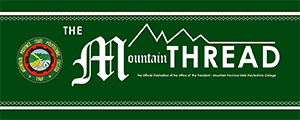ESTIMATING AND FORECASTING DOMESTIC WATER DEMAND AND SUPPLY IN BONTOC, MOUNTAIN PROVINCE: A CATALYST TO WATER DEMAND MANAGEMENT
Emily Ann B. Marrero
Abstract
This study estimates the domestic water demand of a person in Bontoc by quantifying the relationship between domestic water consumption and the socio-economic factors that play an influential and important role in domestic water consumption. This will allow more accurate prediction of domestic water demand and increase the understanding of how the socio-economic variables affect domestic water demand. It uncovers the different household approaches on collecting and using water in the light of water scarcity in activities such as personal hygiene, sanitary services, cooking, drinking, and laundry. Forecasting future domestic water supply and demand is also imperative in this study. It is hoped that this study will assist to improve the efficiency of operations; to determine the appropriate water consumption charges and structure for domestic consumption; and to design a sustainable water demand management program that is reflective of the desires of both the constituents and the Bontoc Water Unit management. Descriptive statistics and multiple regression analysis were the main methods used in this research.
This study found out that the average domestic water consumption of a household member is 90.09 liters per day with a standard deviation of 32.03 on activities such as personal hygiene (44%), sanitary services (30%), cooking (16%), laundry (8%), and drinking (2%). The water discharges from the two sources of water differ per season. The source of water and household head age do not significantly affect the domestic water consumption of each resident in Bontoc while household size, household income, and household head educational attainment significantly influence it. Estimate of domestic water demand on the household activities that cut across household head educational attainment, household size, and household income were studied using the multiple regression analysis. The analysis reveals that as household income increases and the household head educational attainment advances, per capita domestic water demand increases. The household size shows a negative correlation with domestic water demand per person per day such that as household size increases, per capita water demand decreases. Domestic water demand forecast were computed based on the per capita domestic water demand estimate and the forecasted population. From the forecasted data of domestic water supply and demand, there is an undersupply of water of 101,054 liters per day on 2016 with an annual 30% average increase.
The estimated 90 liters per day average domestic water demand of a household member in Bontoc, Mountain Province which is influenced by three variables, household size, household income, and household head educational attainment is way below the estimated standard of LWUA for Filipinos with a household size of 6 that is 140 liters per person per day (Hebert & Yniguez, 1986). It is, however, within the estimated basic water requirement range of 15.54 – 246.78 liters/capita per day in the Philippines (Javier, et al., 1999). The forecasted domestic water supply and demand shows a minimal undersupply of water that does not necessitate the construction of another water source in the next 5 years but only requires a less costly endeavor of coming up with a sustainable water demand management program to be implemented immediately while a long term water shortage solution measure is being planned.




















